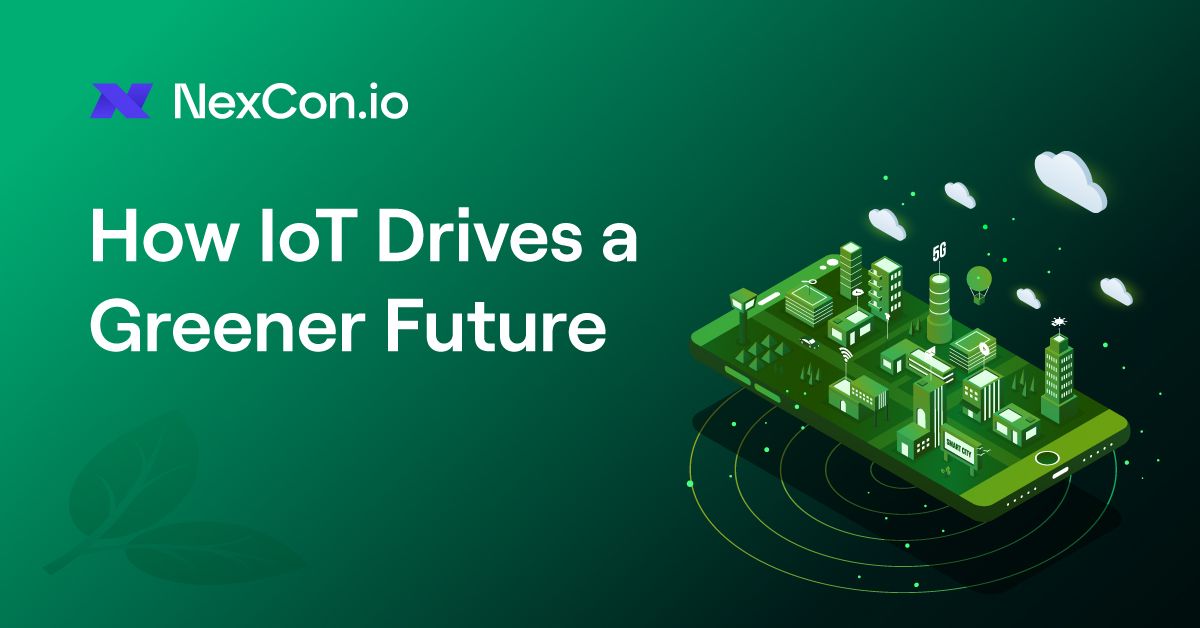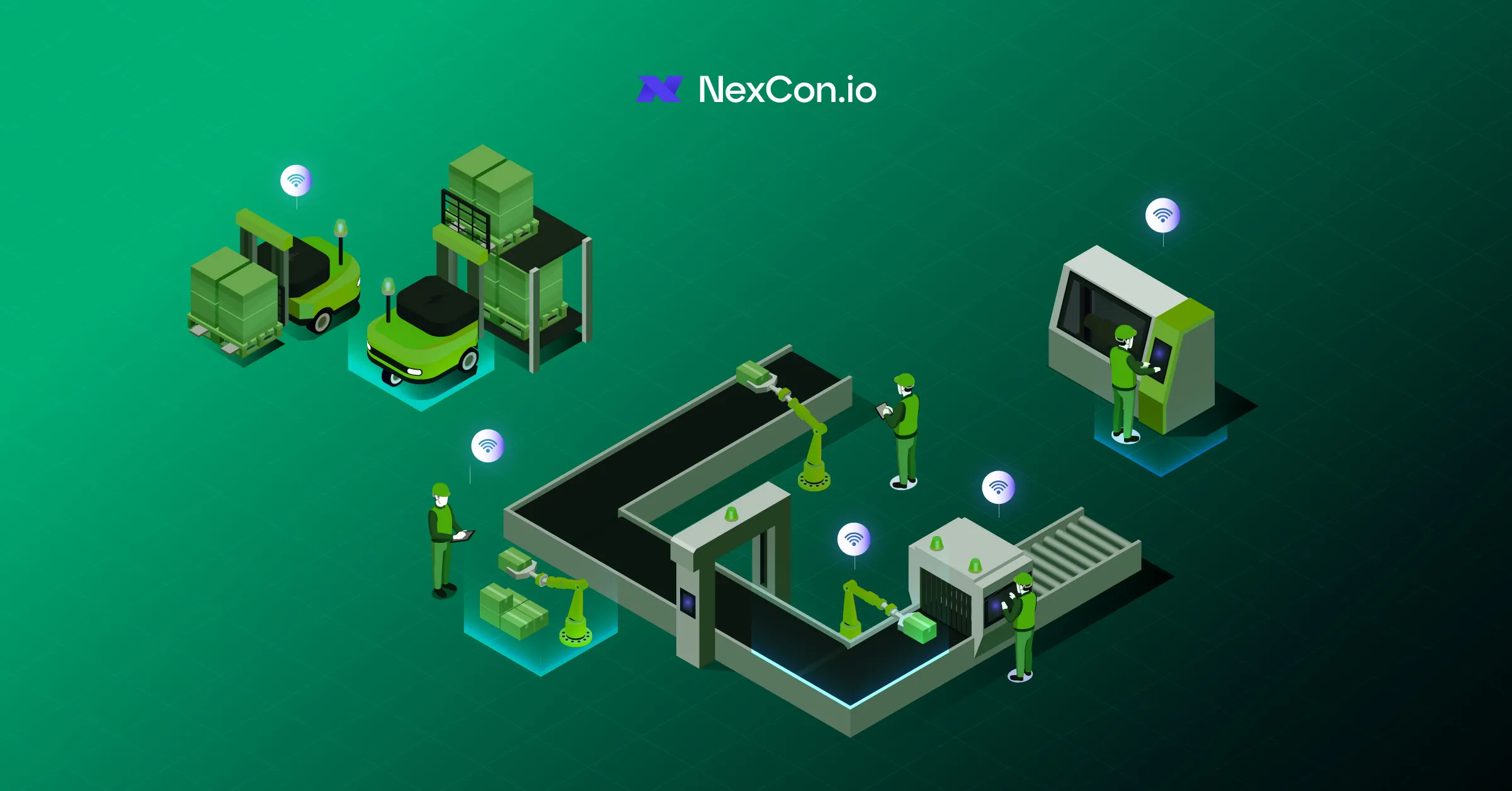The Role of IoT Technology in Creating a Greener Future

Martin Pløger | January 29, 2025

IoT technology has enormous potential to transform the way we approach sustainability and provide us with the tools we need to make solutions both greener and more efficient. IoT alone can of course not save the planet, but it plays an increasingly important role as part of a system of incremental improvements that together create significant progress for sustainability across industries.
IoT makes it possible to use real-time data to save energy, reduce waste and optimize resources – automatically and without the need for manual intervention. What once seemed like a dream of the future is now a reality thanks to IoT and reliable connectivity via IoT SIM cards and eSIMs.
But what makes IoT so unique in a sustainability context? The answer lies in its ability to deliver accurate, automated data and optimize processes in ways that were previously impossible. It’s simply the inherent potential of IoT technology to optimize a wide range of areas that also moves us a step in the right direction in terms of sustainability.
IoT as an enabler
IoT acts as an enabler of the green transition by integrating sensors and connected devices in everything from buildings to vehicles and production lines. Central to all this is, of course, connectivity, where IoT SIM cards and eSIMs are used to provide a reliable connection to the sensors.
The sensors collect data on energy and resource consumption in real time, making it possible to identify inefficient processes and adjust them continuously. In addition, reducing waste, including water, electricity, heat, food and other resources, is one of the most significant optimizations that IoT technology can provide.
For example, smart IoT systems can ensure that lighting and heating in buildings are adjusted according to actual usage. On a broader level, IoT can play a significant role in improving supply chains by fine-tuning logistics and transportation.

How IoT creates more sustainability in the private sector
IoT is already making a difference in many places. Let’s dive into some specific examples from different private sectors that can help provide an understanding of the technology’s potential.
Manufacturing and industry
Industrial factories and manufacturing plants are known to be energy and resource intensive. IoT technologies can help optimize this by monitoring machines and production processes in real time.
By analyzing data, companies can identify inefficient processes, predict breakdowns and adapt production to demand. This reduces energy consumption as well as CO2 emissions.
Production facilities can also use IoT to adapt to changing needs, making it possible to reduce overproduction and thereby waste.
Energy optimization in buildings
Buildings account for a significant portion of the world’s energy consumption, but IoT can help make them more efficient. Smart buildings equipped with IoT sensors can monitor everything from energy consumption to air quality and adapt to occupants’ needs.
For example, ventilation, lighting and heating can be automatically adjusted depending on how many people are in the room and what activities are taking place. This not only creates a better indoor climate but also significantly reduces energy consumption.
Supply chains and logistics
IoT also plays a key role in optimizing supply chains. By equipping trucks and containers with sensors, companies can monitor the transportation of goods in real-time.
Sensors can ensure that sensitive goods like food and medicine are transported under the right temperature conditions. If a deviation is detected, it can be quickly corrected, reducing waste and ensuring higher quality in the final product.
In addition, IoT technology can help optimize routes to reduce fuel consumption. Trucks can plan their routes based on traffic conditions and environmental zones, saving time and reducing emissions.

How IoT creates more sustainability in the public sector
So far, we’ve looked at how businesses can use IoT technology. Now we can take a look at a few examples of how the public sector is using IoT to create tangible green improvements that have a direct impact on citizens’ quality of life.
Smart cities and transportation
IoT is an important component in building smart cities, where cities use data to reduce energy and resource consumption. Smart street lighting is another application where IoT is making a difference. Sensors can adjust according to the weather and detect if there are people or cars nearby and adjust the brightness in real time. This saves energy and reduces CO2 emissions.
Furthermore, IoT is an important piece of the puzzle in the development of public transportation systems that automatically adjust capacity to demand. An empty train or bus wastes energy and money, but with IoT, operations can be optimized to ensure the best use of resources.
Air quality monitoring
IoT helps cities monitor and improve air quality through networks of advanced sensors. These systems measure pollutants such as CO2, NOx and other harmful particulates in real time and alert authorities if levels exceed limits. The sensors can also be used to monitor areas close to specific factories where the risk of exceeding limits is high.
Smart water management secures resources
Water is a scarce resource and needs to be secured in the best possible way. IoT solutions can help reduce waste and optimize the distribution of water. Smart water meters can be used to identify leaks and irregularities quickly, saving billions of liters of drinking water annually worldwide.
For example, the city of Gandia in Spain, with approximately 200,000 inhabitants, has detected over 700 leaks using IoT-based meters that provide real-time data directly to a central analysis system. This saves the city 300 million liters of water annually, which is the equivalent of over 100 olympic size pools. This is a huge improvement considering the size of the city.
IoT and ESG: a strong connection
ESG is a set of criteria used to evaluate a company’s impact on the environment and society and how it is managed internally. It spans areas such as:
(E)nvironment: Environmental and climate conditions, including CO₂ emissions, climate change and pollution.
(S)ocial: Social issues such as working conditions for both the company’s own workforce and workers in the value chain, impact on local communities, consumer protection and end-user considerations.
(G)overnance: Issues related to corporate behavior, such as corporate culture, whistleblower protection and anti-corruption.
For investors and stakeholders, an ESG score serves as an indicator of whether a company operates responsibly and sustainably, which has both ethical and financial value. It is especially the environmental part of the ESG score that IoT technology can contribute to, as we saw above in the examples.
By automating data collection and analysis, IoT can even provide the precise information needed for ESG reporting, which can save large amounts of time and resources. The data is simply delivered directly to the people in charge of the ESG reporting.
Connecting the technologies of tomorrow via intelligent IoT SIM card solutions
At NexCon.io, we specialize in providing intelligent IoT solutions tailored to your business needs. As a customer, you can buy IoT and M2M SIM cards and eSIMs directly in the webshop and easily manage them in the dashboard afterwards with several available features such as data pools, mass editing and IMEI-locking.
By choosing NexCon.io, you get unrivaled quality, support and flexibility to ensure your devices stay connected in an increasingly interconnected world.
Create your free account in less than 30 seconds here or contact our sales team at hi@nexcon.io to find the best possible solution for you.